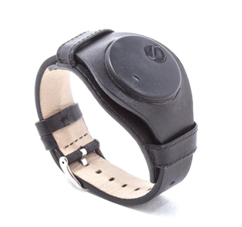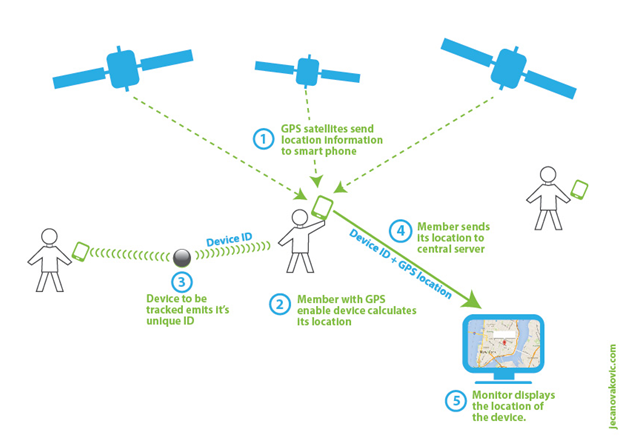Parents of young children and adult children with elderly parents struggle with providing their loved ones the independence they need, while also living with an undercurrent of fear that a moment’s preoccupation will result in their dependent finding themselves permanently out of reach.
Their concern is not surprising when one considers how common it is for dependents to wander off onto unfamiliar grounds. Risky “wandering” behavior exhibited by over 60 percent of those with Dementia (from Alz.org) and about half of those wanderers will experience a serious form of injury or death if not located within 24 hours. 48 percent of children with ASD will attempt to wander or run away from safe environments and find themselves in dangerous places such as traffic zones or at risk for drowning. This accounted for 91 percent of US deaths in Autistic children following a wandering attempt.
However, not only those on the spectrum are at risk. In 2015, the FBI recorded 460,699 (almost half a million) entries for missing children in the NCIC. Although many of these cases are resolved thanks to the help of watchful neighbors and local police, the numbers indicate an alarming rate at which children are routinely removed from their caretaker’s reach.
Advances in technology has enabled many companies to offer safety devices that respond to this problem with creative and diverse solutions. One such solution is offered in the form of pressure-sensor based devices that alerts when a person prone to wandering gets up from their bed, or motion-sensor devices that detects and alerts caregivers based on the motions of their wander-prone child or elderly parent.
After someone has already wandered off though, locating them without being able to intelligently track their location inevitably amounts to dubious guesswork. Like Sens. Schumer and Grassley, many others see the potential in GPS tracking technologies for locating and saving lost loved ones. Amber Alert GPS is among many new wearable trackers that keep everyday people in mind by creating GPS tracking devices that can be worn around the wrist like a watch, worn as a pendant, or sewn into clothing. Currently, GPS tracker based solutions provide the best possibility of locating people who have wandered off. However, they have not picked up in popularity because of issues such as short battery life, clunky design and high monthly costs.
The New Medical ID Tag
Today, there have been advancements in technology that have enabled us to create a more efficient system for wandering safety and medical emergencies. We have now moved on from the old ID bracelets like MedicAlert to the new electronic Medical Tags.

These tags are electronic RF devices which are low power devices which securely emit their unique IDs. These new electronic Medical IDs:
- Are small and discreet low power RFID generating devices. This enables the first responders on site to automatically and remotely detect if the person in need for care has a Medical ID tag.
- Have Unique RFID - This enables both law enforcement officers and volunteers to assist in search and rescue of a missing person, using the GPS on their smart phones. Involvement of volunteers is helpful because it expands the network of possible RF receivers from law enforcement and paramedics to the entire smart phone-carrying community. This is also known as the Crowd GPS.
- Enable law enforcement professionals to automatically bring up the person’s medical history using a corresponding smart phone app. This saves valuable time and eliminates the risk of having the first responders miss key information.
Power of the Crowd - in Search and Rescue
The Power of the Crowd, or crowd sourcing, is a strength that’s created when members of a community work together towards a shared purpose. The result is a solution that’s much larger than the sum of its parts. Today, the Power of the Crowd has been leveraged in many practical applications that help to make our lives easier every day.
Applications of the Power of the Crowd
The Power of the Crowd is used by companies like Foursquare to help people find the best places to eat, drink, shop, or visit in cities all over the globe. Crowd funding companies such as Indiegogo & Kickstarter allow enthusiasts to help up-and-coming startups get enough funding to launch their products. Companies like Waze (a Google company) uses the crowd to help people find the fastest route to their destination. Quora uses its 100 million monthly users to help people find answers to their toughest questions. Uber uses the Power of the Crowd to provide ridesharing solutions and companies like The Tile App and TrackR help people find their lost items by allowing their users’ devices to communicate with each other. The crowd’s power lies in its numbers, and this practice is well documented in Mike Eagan’s article, "Why the Mob Rules".
GPS, Smart Phones, and Safety
GPS, or Global Positioning System, uses a set of orbiting satellites to trace and send precise location details back to Earth. These signals are obtained by GPS receivers, and are used to calculate the exact position of the receiver. Smart phones today are equipped with GPS receivers that use signals from the orbiting satellites and then calculates the location. Gathering GPS signals and calculating location takes power, so GPS receiver chips cannot be inserted into low power devices such as trackers and safety pendants.
That means that when it comes to tracking someone’s location for safety reasons, such as search and rescue situations, only those with GPS-enabled devices that are within range and have sufficient battery life have a hope of being picked up via GPS.
Crowd GPS
When the Power of the Crowd is applied to GPS, the community’s collective devices can be leveraged to fill in the gaps. Those without smart phones or whose phone battery has died can still be tracked with some help from the crowd. In a Crowd GPS system, certain low power devices without traditional GPS capabilities can also be tracked.
These devices emit a RF (Radio Frequency) signal uniquely identifying the device by emitting its ID. Now the crowd can come to the rescue. When a smart phone with an accompanying safety app comes into contact with this ID, it uses its current location and then sends this ID, along with its location, to the central server. The central server now has the device ID and its precise location. This creates a crowd based GPS solution that enables non-GPS devices to be located. It is important to note that if the device is not in proximity to any participating smart phone, it will not be located. This is why the breadth of the community is important to the success of a Crowd GPS network.

Crowd GPS and Safety from Wandering
To protect a person from wandering away and getting lost, that person can simply wear a small device. When the person wanders away too far from home or another safe area, that device emits a unique ID. When any member of the crowd GPS network comes within 100 meters of the wanderer, their smart phone safety app would pick up the signal and send it to a global server to be sent to the caregiver along with its location. This network could help save people who are at risk of wandering off, including people with Dementia and children with Autism.
These were the problems that Sanjay Chadha, CEO of Safety Labs set out to solve by creating Safety Button, a tiny, cost effective device that can be worn in a variety of discreet ways.
This vision of a Crowd GPS network safeguards people from wandering and getting lost, and it’s the concept behind Safety Labs’ Anchor-WP Wandering Protection a system that installs in homes and (digitally) tethers itself to the wearable device. Once the person wanders too far, the central Anchor system alerts the caregiver and registered friends and family. The device then emits the unique ID which would be scanned and transmitted back to the caregiver by a member of the safety community.
The goal for Chadha was to apply crowd GPS to help locate lost people in our communities. When the entrepreneur created Safety Anchor Wandering Protection, he envisioned a “community of communities” that extends beyond the idea of a watchful neighbour. People would help each other find their wandered loved ones by simply downloading a Scanner App on their smart devices: when users with a Scanner App come in range of a lost person wearing a safety button, their devices will automatically send the location of the lost person to the person’s worried caregiver which would provide them with the information necessary to find and recover their loved one.
Only time will tell if crowd source GPS devices will catch on widely enough to turn the community of communities that Chadha envisioned into a reality. One thing is for sure, though—if it does, it would change the meaning of Tile’s slogan from “find what matters” to “find what really matters.”
